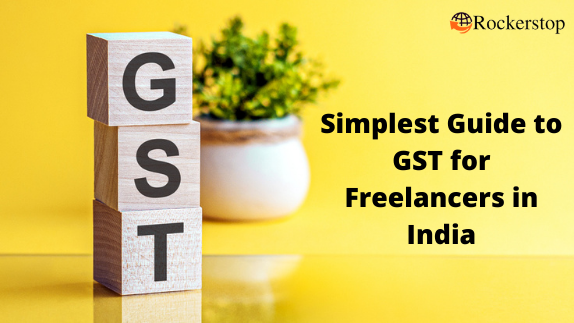Guide to GST for Freelancers
When the Goods and Services Tax (GST) was started in July 2017, it replaced the VAT & Service Tax. While it brought in uniform tax laws for giant and little businesses alike, most businesses struggled with deciding if they needed GST registration. Today, much of the mist has lifted and most businesses have some measure of clarity.
As a freelancer in India, who has not registered under a business name, you’ll wonder why you would like to stress about GST. However, GST does apply to service providers. It’s an honest idea therefore to gauge if you would like to pay the GST on freelancers.
GST Registration for Freelancers
If you’re a freelancer whose turnover during a fiscal year crosses the edge limit of Rs. 20 lakhs, you’d be required to pay GST.
If you’re a freelancer who lives and functions from any of the North-eastern States, you’d cross the edge limit at Rs.10 lakhs and would therefore need to choose GST.
If you’re a freelancer exporting services over Rs. 20 lakhs, you’d need to pay GST. For example, if you’re designing an internet site for a US-based company and therefore the foreign currency you receive as payment exceeds Rs. 20 lakhs, you’d need to register for GST.
Irrespective of the mixture turnover, if you’re receiving payment for services under OIDAR (Online Information and Database Access and Retrieval), GST registration is mandatory.
What are OIDAR services?
Under the GST Act, OIDAR services includes:
1. Advertising on internet
2. Providing cloud service
3. Provision of e-books, music, movie, software via the internet
4. Providing information, retrieval or otherwise to any person in electronic form through a computer network
5. Online gaming
Which GST rates are applicable to freelancers?
The GST rates applicable to freelancers are 0%, 5%,12%, 18% and 28% counting on the sort of service provided. If there’s no specified rate for the service provided, you’ll need to charge 18% GST from your clients.
Documents required for GST registration
- Your photograph
- Copy of your PAN and Aadhaar card
- Identity and address proof
- Latest bank account statement or cancelled cheque
- Your digital signature
- Electricity or telephone bill
- The rental agreement for office premises
- No objection certificates
What are the invoicing rules for freelancers?
Any invoice lifted by a freelancer India should be GST-compliant. The invoice should contain all the required information like name, address, GSTIN of the service provider also because the recipient, SAC of services, date, the worth of service provided and so on.
How the GST Affects your Income
The GST on freelancers affects the customer and not the freelancer or service provider. This means that you simply charge the additional amount to your client. While it’s possible that some clients will choose a provider who doesn’t charge GST, most of them tend to look at GST registration as an indicator of your credibility.
How many GST returns does a freelancer need to file?
A freelancer will need to file 25 GST returns during a year if he’s registered as a traditional taxable person.
Is a freelancer eligible to say input tax credit?
The Indian freelancers, like any other taxpayer under the GST, are allowed to take the input tax credit of the services used by him for the motive of rendering service. For example, he could also be employing a laptop, electricity, telephone etc to supply taxable service. Further, the tax being charged by the freelancer also can be taken as input by the recipient of service. Therefore, we will conclude that the burden of GST doesn’t fall on the freelancer nor will his fee be reduced as he is going to be collecting the additional tax amount from the customers.
Default can Result in Penalty
Since all accounts are Aadhar and PAN linked, the government can more easily track your income through TDS deductions and payments made to your bank. Defaults may result in penalties and damage your credibility.
Voluntary Registration—the good and the bad
Even if your annual turnover is a smaller amount than Rs. 20 lakhs you can opt for voluntary registration. This would allow you to welcome projects from foreign clients, without worrying about possible defaults.
GST Filing
Once you receive your GST number, you would like to file regularly, regardless of your annual turnover. Delays in depositing GST would attract interest.
All payments will need to be made online. If your payments exceed Rs. 10000, the GST must be deposited with the govt on a quarterly or monthly basis. Annually, a complete of 37 returns would wish to be filed—three monthly returns and one annual return.
Clients who don’t want to pay for GST charges you have to explain to them that they can get a tax credit for it when they file for taxes. So, the clients who wouldn’t want to pay for GST charges are the ones who aren’t paying taxes or also aren’t interested in paying you.
To conclude, there are certain conditions under which GST is useful. Our suggestion would be to wait and watch before deciding if you need to register.
